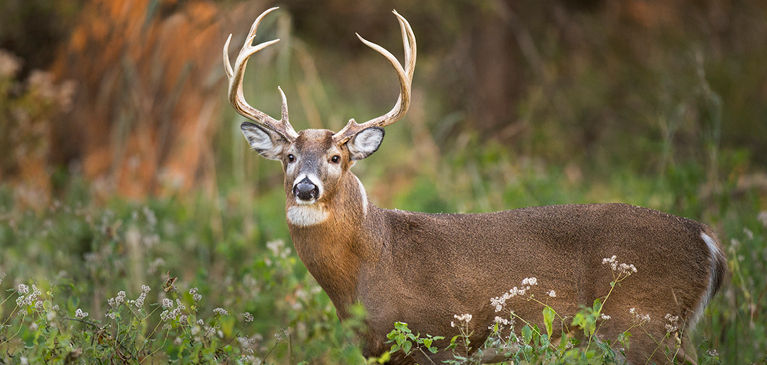
If you have recently bought hunting property, I can imagine your head is full of habitat improvement ideas. You immediately want to get to work creating the next whitetail utopia! However, in this situation, I have seen that all too often the end result of rushing changes is regret. Slowing down, evaluating options, and making a well-thought-out plan is a far better option than rushing.
Changes you make to your hunting land can be tough to reverse and are generally expensive, so trial and error can be costly. Take time to develop a plan to maximize the potential of the property.
Often the recommended first habitat improvement is to do nothing. Spend the first year or two on the property learning how the deer use the land. Scout for signs, use trail cameras, observe, and lightly hunt the property if possible. You want to learn enough to be able to answer the following questions:
1) How much daylight activity is there and where is that activity taking place?
2) Do the animals bed on your property, and where?
3) What are the preferred food sources and when do they use them?
4) What potential stand sites exist on your property and do they have good entry and exit routes to minimize disturbance?
If you’ve owned your property for years, you’ll be able to answer these questions. If you’re new to the property, it will take a year or two to find the answers.
Developing the plan:
Once you have the above questions answered, you can start forming your game plan. For example, if you’re lacking daylight activity and security cover for bedding, then look at hinge cutting, native grasses, and/or timber stand improvements.
The most popular habitat improvements are:
-
Native habitat management
-
Timber stand improvements
-
Hinge cutting
-
Select cutting
-
Clear cutting
-
Food plots
-
Fruit and nut trees
-
Native grass plantings
-
Water sources
Your geographic location, soil types, size of property, and financial position will determine what options are best for your property. There are a number of programs where making improvements to your property may payoff in the form of property tax reductions, Conservation Reserve Program (CRP), or cost-sharing. You will want to learn the ins and outs of each option that you decide to do.
For example, if you decide apple trees are the right option, then ensure you plant apple trees with the rootstock and apple variety that’ll give you the best drop times, disease resistance, and yield. The places I reference most often are local feed mills, farmers, foresters, tree nurseries, and online forums. Some helpful online forums I have found are:
While developing your plan, keep in mind the best option to successfully harvest a deer, is for it to be using your property during daylight. Otherwise, your improvements will be benefiting your neighbors more than yourself. I’ve been hunting the same property for 28 years and have been actively improving it for the majority of those years. We have a mixture of agricultural fields and swamps, which provides ample cover and food for the deer. We concentrate our food plots for maximum late fall and winter food and we’ve focused heavily on planting crab apple and oak trees.
The apple trees are consistently the #1 draw for our deer from when they start dropping until the trees are done dropping, which usually covers September through December.This past winter we had apples still hanging into February with the deer checking them daily to clean up the apples that fall each day.We’ve hunted in Western states in areas dominated by agricultural fields with minimal cover and in those areas, improving cover generally outweighs adding food sources. If you’re hunting heavily forested areas, food plots may be your #1 improvement.Deer behave differently in different areas and have different food preferences, so just because something worked or didn’t work for someone else, doesn’t mean you will get the same results.
Executing the plan:
Now begins the fun part of making the property your own by executing the plan that you’ve developed. Spending time in the woods and fields getting your hands dirty will bring satisfaction as you see your plan develop! Involving family and friends, having fun, and staying safe should all be your top priorities while improving and enjoying your property. When it's all done, maybe you’ll even get to harvest the buck of a lifetime in the process!


